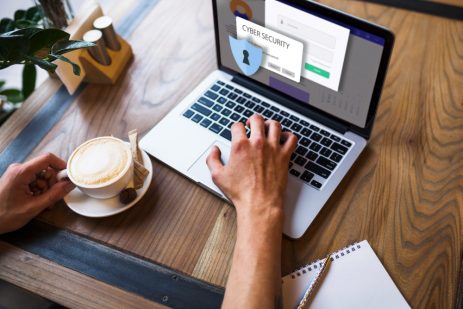Friedrich Merz: Aufstieg, Macht und neue Herausforderung als Bundeskanzler
Friedrich Merz ist eine der prägenden Figuren der deutschen Politik – konservativ, erfahren und trotz früherer Rückzüge immer wieder...
Europe Is Losing in the Economic War Between the U.S. and China
A new global battlefield: trade, technology, and influence In recent years, the global economic landscape has transformed into a...
How to Plan a Budget Wisely and Avoid Unexpected Expenses
Creating a budget that actually works for your lifestyle requires more than just writing down numbers or tracking what you spend in a single week. A truly effective financial plan recognizes that life is unpredictable and accounts for both your everyday needs and the costs you might not see coming. Many people make the mistake of building a rigid budget that only covers recurring bills, groceries, and savings goals, but fails to leave room for surprises such as medical bills, sudden car repairs, or even smaller disruptions like higher utility costs during extreme weather. These unexpected expenses often become the reason budgets fall apart, leading to stress, debt, or dipping into savings that were meant for long-term goals. The solution lies in combining discipline with flexibility. When mapping out your monthly finances, it’s important to not just list fixed costs and set aside savings, but also to create a dedicated buffer, sometimes called an “emergency cushion,” that acts as a shock absorber when the unexpected inevitably occurs. Small, consistent contributions to this safety net can make the difference between staying on track and feeling like your financial plan has crumbled. Another key element of wise budgeting is anticipating recurring but less frequent expenses, such as annual insurance payments, holiday shopping, or school fees. Instead of treating these costs as sudden surprises, break them down across the year and treat them as part of your regular monthly commitments. By planning ahead and maintaining realistic expectations, you’re less likely to be caught off guard. Ultimately, budgeting wisely is not about restriction—it’s about creating a clear, flexible structure that allows you to enjoy life without financial setbacks derailing your bigger goals.
Which Skills Are Most Valued in Remote Employees Today
In today’s rapidly evolving workplace, remote employment is no longer seen as a temporary adjustment but as a permanent feature of how many organizations operate. This shift has transformed the way companies evaluate and prioritize the skills of their employees. Beyond technical expertise and job-specific knowledge, employers are increasingly focused on a set of core capabilities that allow individuals to contribute effectively from a distance. Chief among these is communication: the ability to write clearly and speak thoughtfully across digital platforms has become essential. In a remote environment, where casual office conversations and in-person clarifications are absent, employees must be able to express ideas, provide updates, and raise questions in a way that reduces misunderstandings and keeps projects moving. Alongside communication, self-management is highly prized. Working from home or from a distributed location requires discipline, organizational habits, and time management skills that ensure productivity without direct supervision. Related to this, adaptability has emerged as another critical trait. Remote work often means relying on evolving technologies, shifting workflows, and varied time zones, so employees who can adjust quickly are more likely to thrive. Employers also increasingly value digital fluency: proficiency not just with video conferencing tools but also collaborative platforms, cloud-based systems, and project management applications. Finally, emotional intelligence stands out as a differentiator. The ability to build trust, foster collaboration, and maintain empathy through a screen helps teams remain connected and motivated. Together, these skills reflect the new reality that thriving remotely depends as much on personal flexibility and interpersonal strengths as it does on technical know-how.
How to Create a Comfortable Home Workspace Without Extra Costs
In recent years, more people have found themselves working from home, and while the convenience is undeniable, the challenge of carving out a space that feels both functional and comfortable can be tricky, especially when budgets are tight. The good news is that creating a workspace that supports focus and well-being doesn’t have to involve buying expensive furniture or high-end equipment. It often comes down to rethinking what you already have and arranging it in a way that helps you feel motivated and at ease. For instance, simply relocating a desk or table closer to a window can bring in natural light, which not only boosts mood but can also reduce eye strain. Repurposing items in your home—like using a sturdy dining chair with an added cushion for better support, or stacking books to raise a laptop screen—offers creative solutions without spending anything new. Adding small comforts, such as a soft blanket nearby or a plant from another room, can make the space feel inviting and personal. Organization, too, is key; clearing away unnecessary items and designating a box or tray for essentials can help reduce clutter and make your work area feel intentional. Even if space is limited, setting visual boundaries—like using a folded screen, a rug, or simply changing the orientation of your desk—can help separate “work mode” from the rest of daily life. By being resourceful and attentive to your surroundings, it’s entirely possible to improve productivity and comfort without extra costs, proving that thoughtful adjustments can be just as impactful as costly upgrades.
Why Practicing Digital Minimalism Is Useful and How to Start
In today’s hyper-connected world, it’s easy to feel as though our attention is constantly pulled in a dozen different directions. Between endless notifications, the pressure to stay active on social media, and the blur of emails and digital tasks, many of us rarely get a moment of true mental stillness. This is where digital minimalism comes in. More than just a tech trend, it’s a philosophy of reclaiming control over your digital life so that technology serves you rather than the other way around. Practicing digital minimalism doesn’t mean abandoning your devices completely—it means using them with intention, trimming away the noise, and focusing your time and attention on the tools and interactions that genuinely bring value. The benefits of this shift can be profound: reduced stress, sharper focus, and a stronger sense of presence in daily life. By stepping back and reassessing which digital platforms or tools are actually improving your well-being, you give yourself the chance to live more deliberately. Starting is often easier than people think. Small steps, like turning off non-essential notifications, setting designated times to check email, or choosing to log off social media for a limited stretch, can build momentum. Over time, these conscious decisions add up to a healthier relationship with technology. The goal is not digital abstinence but mindful engagement—a balance where tech enhances your life instead of overwhelming it. With consistency, you may find that space once crowded by distractions becomes fertile ground for creativity, meaningful conversations, and a deeper appreciation of the present moment.
How to Identify Which Technologies Your Business Really Needs
In today’s fast-moving digital landscape, businesses are constantly bombarded with new tools, platforms, and systems that all promise to revolutionize productivity or unlock growth. Yet the reality is that not every innovation is a good fit for every organization. The challenge many leaders face isn’t a lack of available technology, but rather knowing how to separate the genuinely useful from the distracting and unnecessary. Choosing the right technologies starts with understanding where your business is headed and what goals you need to achieve. A flashy app might look appealing, but if it doesn’t connect with your long-term strategy or solve a clear problem, it can easily become an expensive distraction. Identifying your business’s true needs often begins by asking practical questions: Which processes slow us down today? Where are we losing valuable time or resources? What opportunities are we missing because of outdated systems or manual tasks? By framing technology as a tool to address specific gaps, rather than a trend to keep up with, companies can avoid the trap of adopting solutions that don’t provide real value. Equally important is involving the right people in the decision-making process. A piece of software may look promising from a management perspective, but if the employees who will rely on it daily find it clunky or redundant, the investment may fall flat. Businesses that succeed in making wise technology choices tend to focus on alignment—matching capabilities with both their operational realities and forward-looking aspirations. Instead of chasing every new development, the most effective organizations implement technologies that build efficiency, support growth, and enhance customer experiences. Finding that balance requires discipline, clarity, and a willingness to prioritize function over novelty.
Daily Habits That Help Maintain Productivity
In today’s fast-paced world, productivity has become more than just a buzzword—it’s a necessity for balancing the competing demands of work, personal growth, and everyday responsibilities. While many people chase elaborate systems or expensive tools to stay on top of their tasks, the truth is that productivity often comes down to consistent daily habits that create structure and energy. Simple practices such as starting the day with a clear plan can make a significant difference. A short morning review of priorities sets the tone and helps avoid decision fatigue later on. Equally important is breaking work into focused intervals with meaningful breaks in between; this rhythm not only prevents burnout but also encourages sharper concentration when it really matters. Healthy routines outside of work, like regular exercise, staying hydrated, and keeping to a consistent sleep schedule, also play a surprisingly powerful role in maintaining energy levels and focus through the day. Another often overlooked habit is knowing when to step away from multitasking. While juggling several things at once may feel efficient, it usually reduces accuracy and drains mental resources more quickly. Concentrating on one task at a time tends to produce better results and leaves room for a greater sense of accomplishment. Even small moments of mindfulness, such as pausing to reflect before moving to the next responsibility, can ground the mind and make the workload feel more manageable. At its core, maintaining productivity is not about doing as much as possible, but about creating sustainable routines that keep motivation steady and make progress feel achievable day after day.
How to Keep Your Personal Data Safe Online
In today’s hyper-connected world, the convenience of the internet often comes with a hidden cost: the vulnerability of personal data. From the moment we log into an email account to the second we make an online purchase, we are leaving digital footprints that can be traced, stored, and, in some cases, exploited. Cybercriminals are constantly developing new tactics to gain access to personal information such as passwords, banking details, and even social security numbers. This makes the responsibility of safeguarding our data not just a matter of privacy, but a matter of personal security. The good news is that with awareness, vigilance, and a few practical measures, individuals can drastically reduce their risk of falling victim to data breaches or identity theft. Protecting personal data online goes far beyond simply using strong passwords—though that remains one of the most essential first steps. It also involves enabling multi-factor authentication whenever possible, keeping software up to date to patch security flaws, and being skeptical of suspicious links or attachments. Public Wi-Fi, while convenient, can also present dangers, and using a reliable virtual private network (VPN) can help shield online activity from prying eyes. Just as important is taking a mindful approach to what we share on social media, since oversharing personal information can make us easy targets. Cybersecurity is not a one-time effort; it requires ongoing attention and adaptability as technology and threats evolve. Most importantly, by cultivating safer online habits, individuals not only protect their own data but also contribute to a more secure digital environment for everyone.
What to Consider Before Starting Your Own Online Project
The idea of starting your own online project can be exciting, filled with the promise of independence, creativity, and the potential to reach people across the globe. Yet, before diving in headfirst, it’s important to pause and carefully consider what lies ahead. Countless individuals launch websites, digital stores, blogs, or community platforms each year, but not all of them succeed. Success in the online space depends less on having a flashy idea and more on preparation, clarity, and perseverance. One of the first things to reflect on is your motivation. Are you creating this project because you are passionate about the subject matter, because you see a business opportunity, or simply because you don’t want to miss out on the digital wave? Clarifying your “why” will help you stay grounded when initial enthusiasm fades or when unexpected challenges arise. Equally vital is defining your target audience. Even the most innovative project will struggle without a clear picture of who it is meant to serve. Take time to research your audience’s interests, frustrations, and habits online. This groundwork will guide your design, your content, your branding, and eventually your growth strategy. Beyond this, be realistic about the resources you need. Time, money, and technical skills all play a role—and underestimating these factors can leave promising projects stranded halfway. Risk management, scalability, and long-term sustainability should also be part of your thought process from the start. An online project might start small, but foresight and careful planning can position it to evolve and thrive, turning an early idea into something that genuinely makes an impact.

















